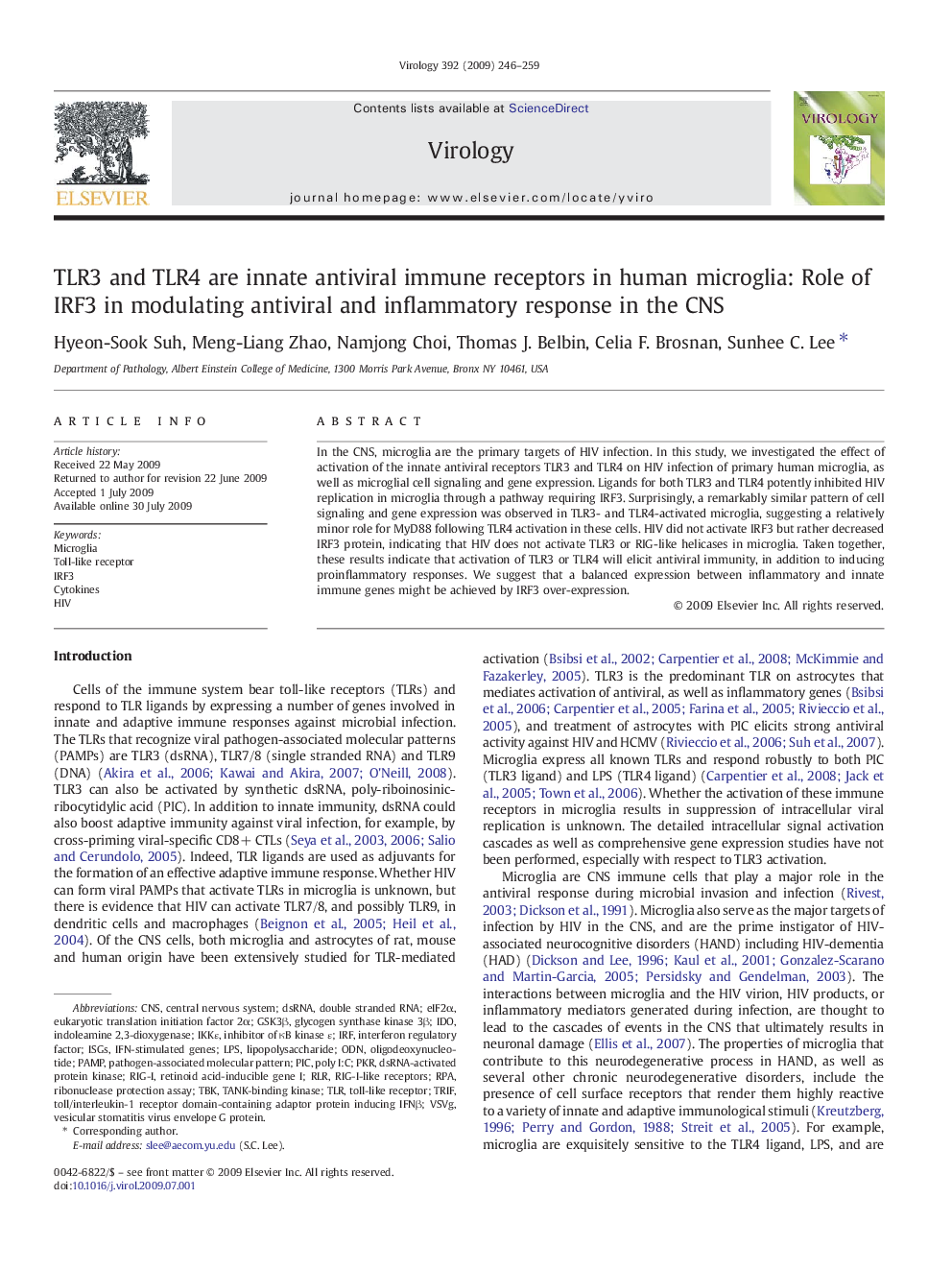| Article ID | Journal | Published Year | Pages | File Type |
|---|---|---|---|---|
| 3425713 | Virology | 2009 | 14 Pages |
In the CNS, microglia are the primary targets of HIV infection. In this study, we investigated the effect of activation of the innate antiviral receptors TLR3 and TLR4 on HIV infection of primary human microglia, as well as microglial cell signaling and gene expression. Ligands for both TLR3 and TLR4 potently inhibited HIV replication in microglia through a pathway requiring IRF3. Surprisingly, a remarkably similar pattern of cell signaling and gene expression was observed in TLR3- and TLR4-activated microglia, suggesting a relatively minor role for MyD88 following TLR4 activation in these cells. HIV did not activate IRF3 but rather decreased IRF3 protein, indicating that HIV does not activate TLR3 or RIG-like helicases in microglia. Taken together, these results indicate that activation of TLR3 or TLR4 will elicit antiviral immunity, in addition to inducing proinflammatory responses. We suggest that a balanced expression between inflammatory and innate immune genes might be achieved by IRF3 over-expression.
